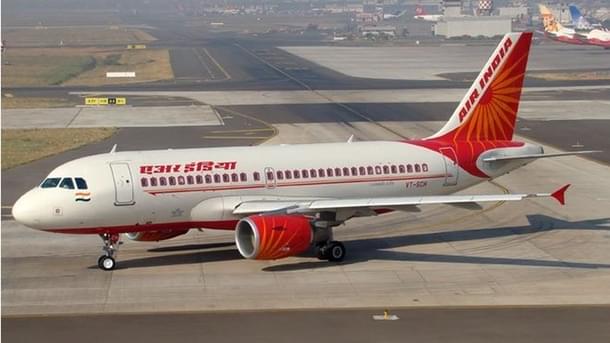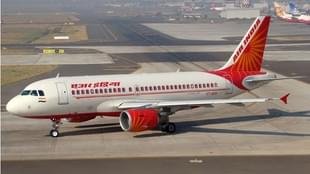Economy
Postpone Air India Disinvestment Say MPs, But Why?
Sindhu Bhattacharya
Jan 08, 2018, 01:44 PM | Updated 01:44 PM IST
Save & read from anywhere!
Bookmark stories for easy access on any device or the Swarajya app.


Our members of parliament (MPs) want the government to postpone the proposed disinvestment of Air India since the airline’s financial performance has been improving and anyway, the government has not infused as much money into the airline as it had itself promised under a turnaround plan. A parliamentary standing committee on transport, tourism and culture is expected to make this recommendation soon, as reported by Livemint.
The proposal to privatise Air India was mooted this summer, when the NITI Aayog recommended that the government divest its stake in the ailing, debt-ridden airline and five of its subsidiaries, since it can make better use of the resources elsewhere in welfare schemes etc. The argument given was: why should the government continue to fund losses of this airline when the same money can be used better, more productively, elsewhere. The Turnaround Plan (TAP), which the United Progressive Alliance (UPA) government had approved earlier, had envisaged equity infusion of a little over Rs 30,000 crore till 2021 and of this, over Rs 22,000 crore has already been infused by the government till date.
While it is true that the net loss has been reducing year on year and the airline has even managed to post a nominal operational profit for two years in a row, how does the basic assumption – the government is throwing good money after bad by continuing to stay invested in Air India – change?
In 2016-17, the airline posted a provisional net loss of Rs 3,643 crore or almost Rs 10 crore each day of the year. Air India continues to be among the top five of India’s public sector units which post a loss every single year; the airline alone (not including its subsidiaries) accounted for over a fourth of the total loss of all public sector units (PSUs) in 2015-16.
And as this piece shows, the government has already pushed back plans of any disinvestment in the next-in-line loss making PSU, Bharat Sanchar Nigam Limited (BSNL), due to heightened competition from private players.
The same story could play out in the aviation sector too, in case the government now dithers over whether to disinvest from Air India or not. Remember, the debt on Air India’s books continues to be over Rs 50,000 crore, which is more than India’s health budget for its over 1.3 billion citizens in 2017-18. As for operational performance, the airline’s domestic market share fell from 17.09 per cent in 2014-15 to 15.9 per cent in 2015-16 and 14.2 per cent in 2016-17. It has one of the worst on-time performances among all Indian airlines from India’s top four airports and usually receives the maximum passenger complaints. And as private airlines line up mega capacity-expansion plans amid rising air traffic, Air India’s market share and other operational parameters are unlikely to get a fillip.
Earlier, while listening to stakeholders on the Air India disinvestment issue, members of the parliamentary panel, which is expected to ask the government to postpone privatisation, had sharp differences. “There were sharp differences of opinion among the BJP and non-BJP members at the meeting. All the trade unions strongly opposed the decision to privatise Air India, while some members wanted to know why profitable ventures like Air India Express are being sold,” said a Lok Sabha member, as quoted. One wonders if all the opposition to the stake sale in Air India is merely to score political brownie points.
In the latest report, the MPs are also expected to say that the government should write off Air India’s debt and allow it to turn around for another five years. Why not double the country’s health budget instead, since we seem to be flush with cash? A better alternative than saving the white elephant called Air India, in all aspects, seems to be a strategic disinvestment where core assets of the airline business of Air India are sold off to a private player.
It is possible to break up Air India into two distinct parts: 1) The airline itself with aircraft and related assets and 2) Air India’s loss making subsidiaries and the real estate. The sensible way to get maximum value in any sell-off would be to offload just the airline and related assets to a prospective buyer. The government could then separately dispose off the remaining subsidiaries and real estate for a total consideration of close to Rs 20,000-21,000 crore, according to initial estimates by Air India officials.
Any prospective buyer must agree to bear about Rs 20,000 crore of aircraft loans and another Rs 6,000-7,000 crore of working capital loans. There is no sense in writing off the entire loan amount of the airline in one tranche. Officials involved in the disinvestment process have explained earlier that the current market value of aircraft is higher than the loans. And of the Rs 30,000 crore total working capital loans, the bidder may be asked to take on only Rs 6,000-7,000 crore. In return, the buyer gets a fleet of 43 owned aircraft, valuable domestic and international slots (for which buyers are usually willing to pay a premium), parking bays etc.
The government, instead of allowing Air India to plod on under its ownership, should prepare to exit the airline business in good time. Key decisions like, which portion of Air India to sell, how much debt to remove from the core airline to make it attractive to buyers, whether to allow foreign airlines to also participate in the stake sale process and the like are still pending. Any going back on a disinvestment of Air India will likely harm the very employees whose interest the parliamentary panel seems to want to uphold.
Sindhu Bhattacharya is a senior journalist.





